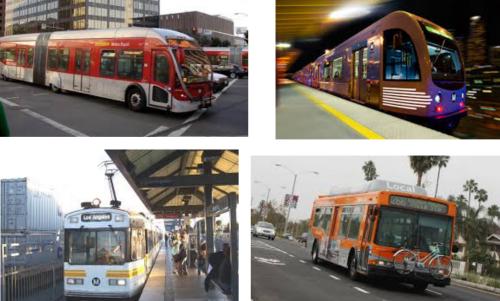A suggestion for on-demand public transit, from Fiumicino to Los Angeles
Five years ago I wrote that all of precarious workers of the Fiumicino airport should partner and tell, to the many private bus companies that move tourists in and out of the same airport:
dear private bus companies, we’re here, all together: we’re thousands of people to move back and forth from the same place, every hour, every day. Thanks to the Internet, we’re able to collect all our shifts by ourselves, that is to calculate and let you know every week how many buses we need, when and on which routes. We’re able, that is, to fill your buses even when they would otherwise be empty, for example when they come to the airport to load tourists. And we could do all this without intermediaries that would reduce our savings, or your gains. Which of you will give us the better deal?
A few weeks ago, I also pointed out that driverless “cars” would be much easier to deal with, and much more beneficial, if we all started to call and treat them as “on demand, shared micro-trains”.
That’s why I am really happy to read that: “Yes, on-demand service is finally coming to public transit, and it could reshape the way Americans get around. Just in time too."

According to that Wired article, in fact, LA Metro would like to run, next year, a service that looks just like what I imagined five years ago for the Fiumicino workers:
“You’d use a smartphone app or phone call to beckon a ride from a smaller vehicle, something between a sedan and a full-size bus, which you would share with other riders. That vehicle would run on the same kind of platform you’ll find on UberPOOL, or Lyft Line, dynamically creating routes based on where customers are and where they want to go."
If I may make a suggestion, I would run two separate services like that, because in any big city or metropolitan area there are two very different causes of mobility, each with its own patterns and needs: commuters, and “occasional movers” (of course, most individuals are in both classes, at least in some moments).
Commuters move in greater, more constant numbers, more or less regularly, along relatively few routes to and from “aggregation points”: industry parks, office clusters, schools, stations…
“Occasional movers” are individuals, couples or single families, minding their own businesses: birthday parties, medical check-ups, family reunions, movies… but also professionals who must move alone, everyday, from doctors to plumbers.
A service optimized first of all for commuters, like the one I suggested for Fiumicino, would help solving several of the problems outlined in the Wired article. First of all, it may be fairer, serving first people who are transit-dependent and live paycheck to paycheck. At the same time, it may be easier to manage and cost (much) less, because it should manage less rides on less routes, but in a more predictable way, with a relatively constant number of passengers on each rideassengers…). And in doing so, it would already eliminate a lot of traffic. At the same time, nothing would prevent its completion, or integration, with a service for “occasional movers”. Managing both the buses and cars offering the service as driverless, on-demand micro trains would bring even more benefits.
I really look forward to see how this LA Metro initiative proceeds. And if I can help with it, just call me.
Who writes this, why, and how to help
I am Marco Fioretti, tech writer and aspiring polymath doing human-digital research and popularization.
I do it because YOUR civil rights and the quality of YOUR life depend every year more on how software is used AROUND you.
To this end, I have already shared more than a million words on this blog, without any paywall or user tracking, and am sharing the next million through a newsletter, also without any paywall.
The more direct support I get, the more I can continue to inform for free parents, teachers, decision makers, and everybody else who should know more stuff like this. You can support me with paid subscriptions to my newsletter, donations via PayPal (mfioretti@nexaima.net) or LiberaPay, or in any of the other ways listed here.THANKS for your support!